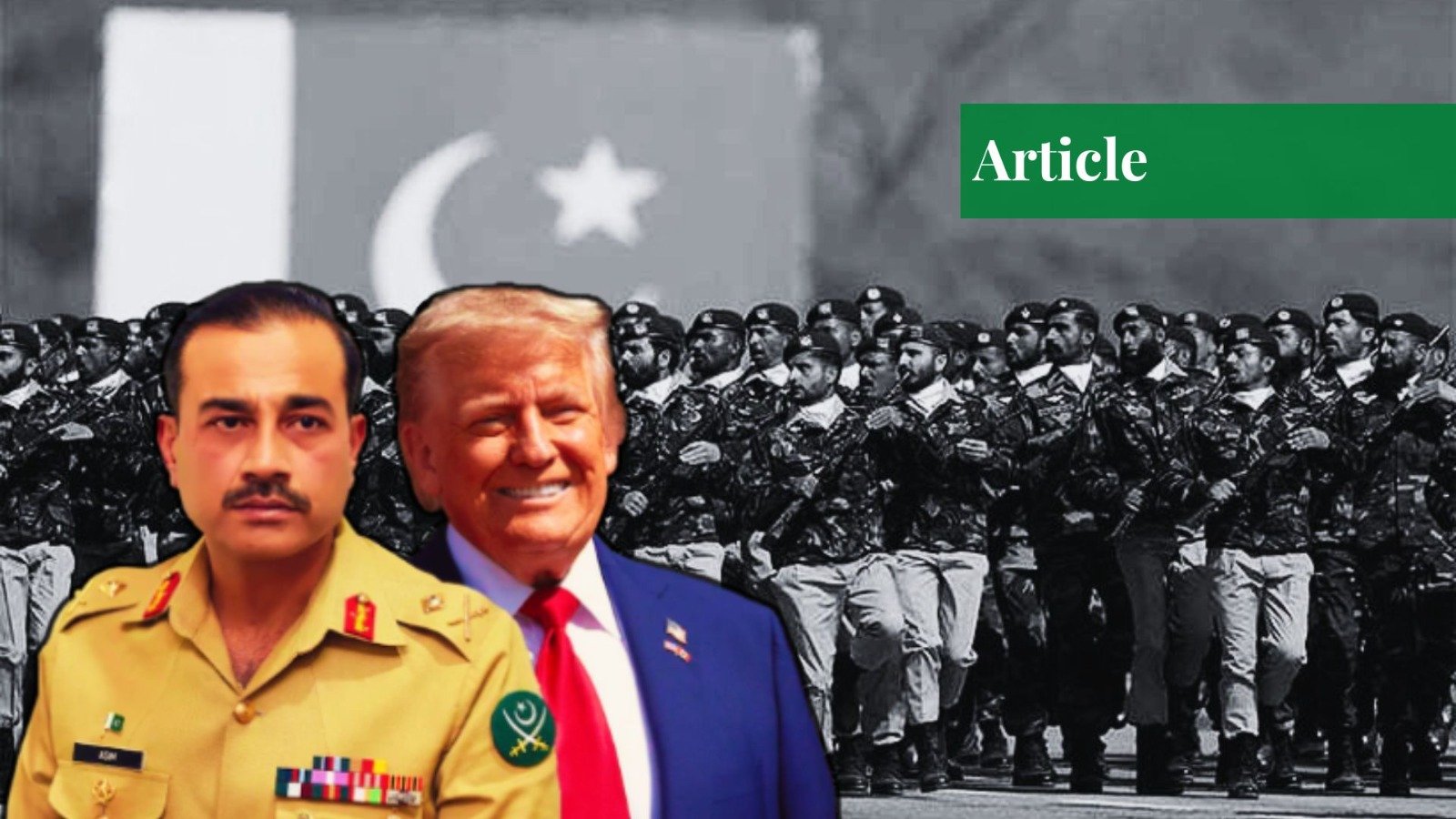Introduction
In a world increasingly polarized by geopolitical rivalries and strategic competition, the military of Pakistan has strategically promoted a narrative other than coercion and hard power. Rather, it creates an image of service, humanitarianism, and collaborative diplomacy. This concept reflects Joseph Nye’s concept of “soft power,” which emphasizes attraction and legitimacy over coercion. Scholars such as Cottey & Forster (2004) also highlight “military diplomacy” as an emerging tool where armed forces foster trust, cooperation, and influence beyond battlefield utility.
This is a long-established strategy reinforced in 2025 with high-profile engagements, which emphasizes the role of Pakistan as a responsible actor dedicated to world peace and stability. Pakistan’s armed forces have re-construed the role of military power as an instrument of trust-building and soft power through peacekeeping operations, disaster relief, multilateral naval exercises, education exchanges, and diaspora outreach.
Pakistan’s Military Role in UN Peacekeeping Missions
The foundation of Pakistan’s global military diplomacy is the unmatched contributions to the United Nations Peacekeeping Operations (UNPKO). Since 1960, Pakistan has been one of the largest and most consistent contributors of uniformed personnel to the UN. According to statistics, more than 235,000 Pakistani military personnel and officers have been deployed under the blue flag in 48 UN operations around the globe. Notably, 181 Pakistani peacekeepers had made the ultimate sacrifice to achieve global peace.
Yet, it is noted that Pakistan’s sustained UN engagement is not purely altruistic; it also brings financial reimbursements, training exposure, and enhanced global legitimacy for its armed forces (Bellamy & Williams, 2010). This duality underscores how peacekeeping serves both humanitarian ideals and strategic self-interest. In early 2025, Pakistan remains one of the top 5 troop-contributing nations, with more than 1,700 troops deployed on critical missions, including the United Nations Organization Stabilization Mission in the Democratic Republic of the Congo (MONUSCO) and the United Nations Multidimensional Integrated Stabilization Mission in Mali (MINUSMA).
Global Solidarity and Humanitarian Relief
The spirit of service was portrayed after the devastating earthquake that hit Türkiye and Syria in February 2023. A special air bridge was set up within hours that coordinated the rapid arrival of C-130 aircraft loaded with relief supplies. One of the most affected areas was Antakya, Hatay, where the Pakistan army stationed a 30-bed field hospital equipped with medical teams and experts. This health facility treated more than 16,000 patients and carried out numerous lifesaving operations.
Specialist urban search and rescue teams worked tirelessly alongside international partners, saving lives under the rubble. This operation was one of the largest foreign humanitarian deployments in recent history and a testament to the logistical capability of the military. Beyond logistics, this deployment reinforced Pakistan’s image as a humanitarian actor in the Muslim world, strengthening solidarity with Türkiye, a key strategic partner, while also showcasing military efficiency to global audiences.
Maritime Engagement and Naval Diplomacy
Beyond the crisis response, the military diplomacy of Pakistan is actively defining the future of regional security cooperation. The most notable is the “AMAN” series of multinational naval drills, which are hosted by the Pakistan Navy. The most recent one, AMAN-2025, which was held in the Arabian Sea, was a milestone. The drill involved more than 50 countries with naval forces, aircraft, special operations forces, and observers. The name “AMAN,” meaning peace in Urdu, reflects the spirit of the exercise: fostering cooperation for maritime security and combating shared threats like piracy and terrorism.
In the broader Asia-Pacific context, such exercises also allow Pakistan to remain strategically relevant amid US-China maritime competition, positioning itself not only as China’s ally but also as a bridge-builder with Western and regional navies. AMAN-2025 was a platform of its own, where competitors such as regional navies with conflicting interests could act under one Pakistani command, which allowed them to dialogue and establish confidence with each other. This initiative is an effective way to present Pakistan not as a regional spoiler but as a responsible and inclusive stakeholder who is dedicated to Together for Peace.
Military Training and the Military’s Education Diplomacy
Education and training are also an instrument of military diplomacy. More than 4000 officers from over 40 countries have been trained and studied in institutions such as the Pakistan Military Academy at Kakul and the National Defense University in Islamabad. Eventually, these trained professionals will become part of their state’s senior command, hence culminating in an enduring relationship with Pakistan. Additionally, the medical corps of the army also organized free medical camps in foreign countries, particularly in Africa and the Middle East, where they offer surgeries, vaccines, and expert treatment to underserved communities.
Though often overlooked, such initiatives steadily build goodwill and enduring partnerships that strengthen Pakistan’s international profile. Such initiatives, while less visible, resemble the US International Military Education and Training (IMET) program, which has historically cultivated pro-US officers worldwide. Pakistan’s similar approach quietly builds long-term influence networks that can pay diplomatic dividends decades later.
Asim Munir’s Visits and Strategic Realignment with the US
Although the trajectory of the military diplomacy of Pakistan has been traditionally consistent, the events of 2025 marked a significant intensification. This was seen after the two consecutive successful visits of General Asim Munir to the United States. In June, he made a five-day official visit, which included a luncheon at the White House with President Donald Trump, a unique privilege not granted to any serving Pakistani army chief in the past decades.
The visit included high-level meetings and an address to the Pakistani diaspora, where General Munir highlighted their vital role in promoting Pakistan’s image abroad. The visit took place in the context of renewed tensions between Pakistan and India, which had significant strategic implications. It was an indication that Washington was no longer willing to ignore the role played by Pakistan in ensuring regional stability.
Yet, the durability of this shift remains uncertain. US-Pakistan ties have historically oscillated between cooperation and neglect, raising doubts about whether these visits represent a structural change or another episodic alignment. However, critics argue that Washington’s renewed warmth may be tactically driven by counterterrorism and Asia-Pacific concerns rather than a wholesale reorientation of its South Asia policy.
Only six weeks later, COAS General Asim Munir came back to the US for what he called a “new dimension” of Pak-US relations. The second visit involved attending the retirement ceremony of the US Central Command general Michael Kurilla and also meeting with the appointment of his successor, Admiral Brad Cooper. General Asim Munir stressed the importance of prolonged military-to-military interaction and the invitation for mutual visits.
In the same visit, the United States officially declared the Balochistan Liberation Army and its Majeed Brigade as terrorist groups, a decision welcomed in Islamabad as aligning with its counterterrorism policy. General Asim Munir once again urged the diaspora to invest in Pakistan, transforming the narrative from brain drain to brain gain. These visits are not merely important in their symbolism, but also in their signaling of a shift in transactional cooperation to restoring relationships on the basis of shared security, counterterrorism, and diaspora-based economic connectivity.
Conclusion
The Pakistan military diplomacy shows the transition of coercive posturing to cooperative engagement with peacekeeping, humanitarian relief, maritime security, and educational exchanges. The US visits of General Asim Munir further enhanced this change, emphasizing the efforts to establish long-term relationships based on a common security and diaspora connections. The military’s influence in Pakistan is no longer about coercion but rather about cooperation and trust.
This evolution underscores its growing contribution to soft power, thereby enhancing its relevance and legitimacy globally. Nevertheless, Pakistan’s military diplomacy faces structural limits: its soft power projection is often overshadowed by regional distrust, persistent civil-military imbalances at home, and its heavy dependence on great-power patronage. Unless these constraints are addressed, Pakistan’s cooperative image may remain fragile despite its impressive achievements.
If you want to submit your articles and/or research papers, please visit the Submissions page.
To stay updated with the latest jobs, CSS news, internships, scholarships, and current affairs articles, join our Community Forum!
The views and opinions expressed in this article/paper are the author’s own and do not necessarily reflect the editorial position of Paradigm Shift.
Muhammad Noman is currently pursuing a BS in strategic studies at the National Defence University, Islamabad. He has previously served as a research intern at the Ministry of Defence, where he contributed to policy-oriented research. He is actively engaged in coursework related to national security, defence policy, nuclear studies, and modern warfare, with a keen interest in regional security dynamics, strategic stability, and contemporary geopolitical challenges.



